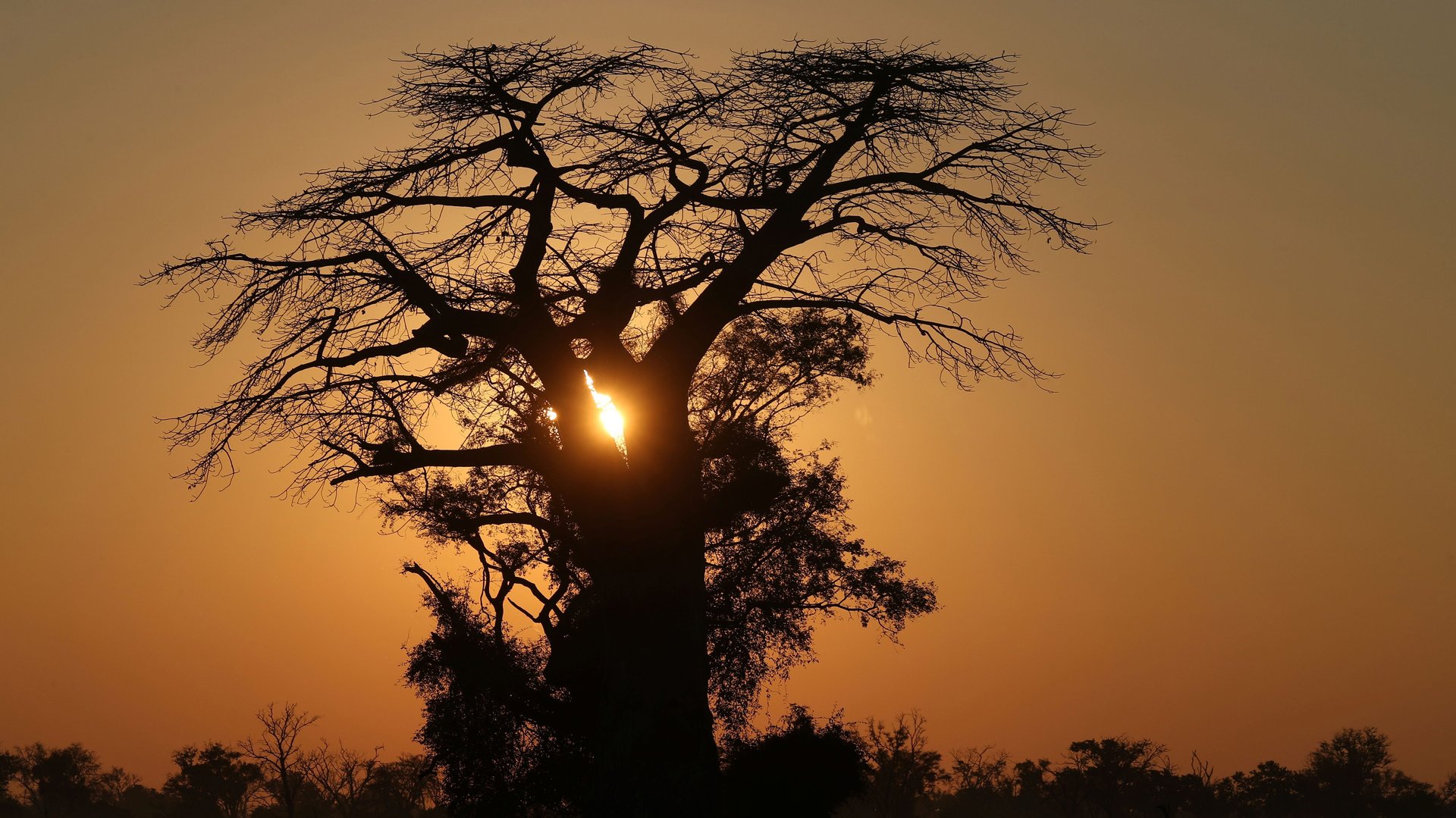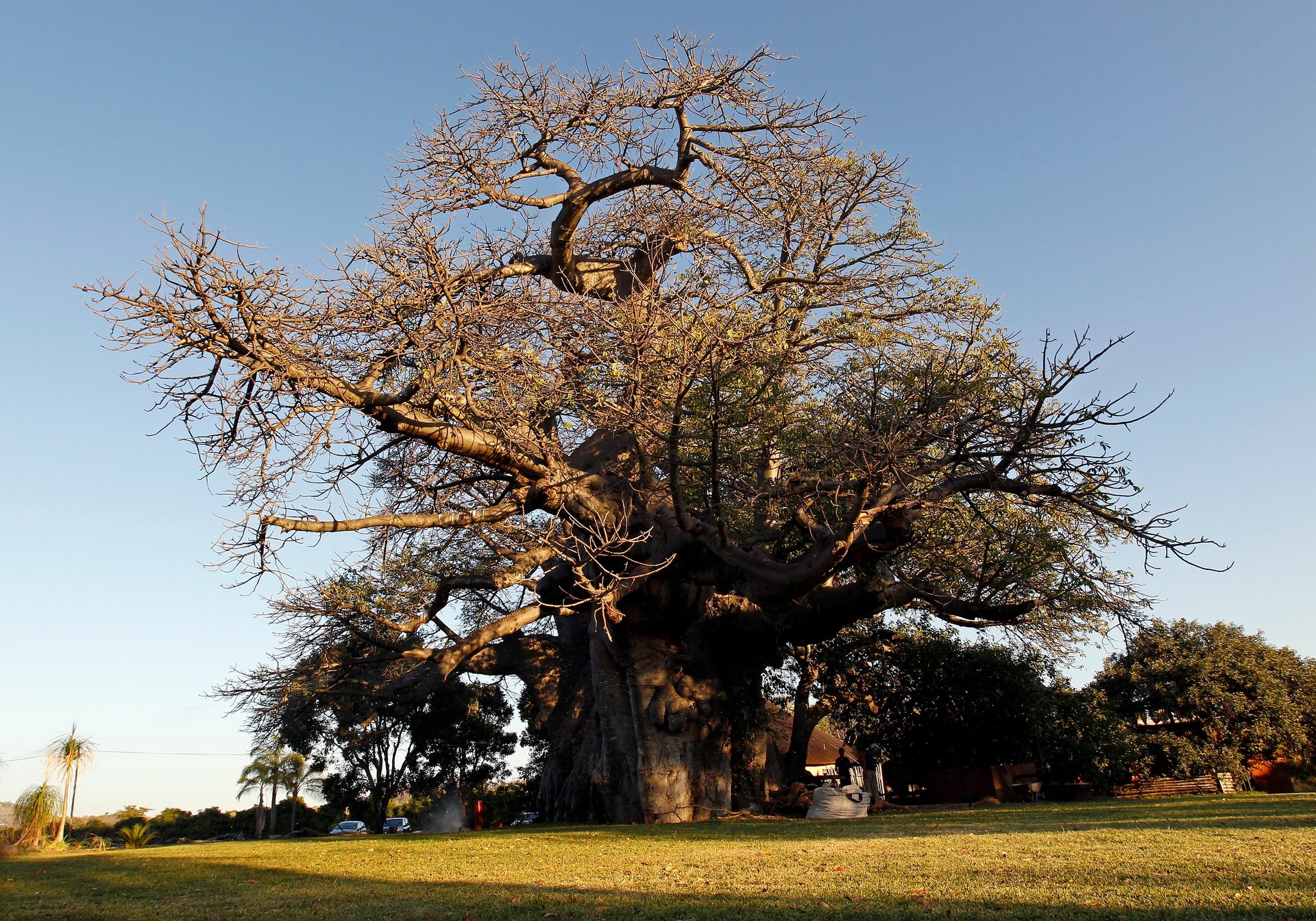A vital part of the African landscape is disappearing
The baobab tree is one of the most iconic symbols of the African landscape. With its gnarly, root-like branches, it is often described as the “upside-down” tree, and its impressive height and width has inspired folktales, photographs, and iconography. The trees can live for more than 2,500 years, and have been beloved for centuries by humans as a meeting place, and by elephants as a chewy water source.


The baobab tree is one of the most iconic symbols of the African landscape. With its gnarly, root-like branches, it is often described as the “upside-down” tree, and its impressive height and width has inspired folktales, photographs, and iconography. The trees can live for more than 2,500 years, and have been beloved for centuries by humans as a meeting place, and by elephants as a chewy water source.
Now the oldest of this amazing species is rapidly dying out.
According to research published in Nature Plants this week, nine of the 13 oldest baobabs in Africa, and six of the continent’s largest specimens, are in the process of dying or have died over the last decade. This finding “is an event of an unprecedented magnitude,” the researchers write. “These deaths were not caused by an epidemic and there has also been a rapid increase in the apparently natural deaths of many other mature baobabs.”

The researchers, part of an international consortium, initially began studying large, old baobabs in 2005 to better understand the way they were built and their age, which can be tricky to measure and accurately determine. Using radiocarbon dating, they would ultimately study 60 trees in several countries. In the process, they discovered that several of the oldest, including baobabs beloved by local communities and tourists, were in various stages of deterioration. The researchers posited that climate change might be at play. “We suspect that the demise of monumental baobabs may be associated at least in part with significant modifications of climate conditions that affect southern Africa in particular,” they write. “However, further research is necessary to support or refute this supposition.”
The impact of climate change is already putting massive strain on Africa’s borders and resources. Baobabs, with the history of their environment richly encoded in their wood, provide a valuable climate record, and can be used to test future climate models, co-author Stephan Woodborne says. Their accelerated death is an “unfolding tragedy.” While a number of causes can be hypothesized for their decline, Woodborne says, the trees have endured multiple threats, including extended droughts, before. Climate change is different.
Woodborne describes initially being excited to see and study his first fallen baobab, a “once-in-a-lifetime” event. That was until he realized, “What I thought is a really rare event, is not such a rare event, after all.”